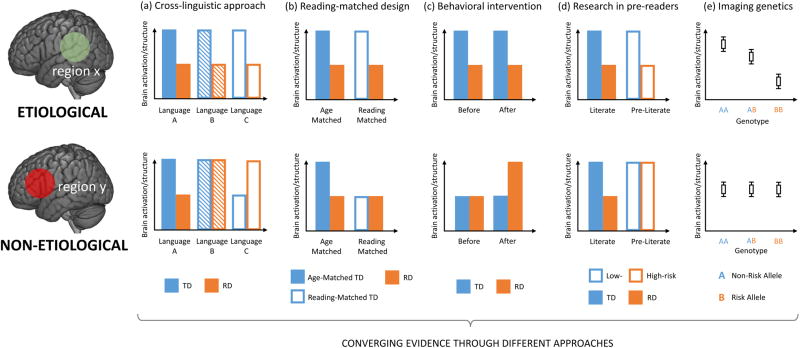Figure 1.
Five main approaches that can support etiological inference of reading disorder (RD) are presented schematically, including: (a) comparing RD with controls in different languages; (b) comparing RD with both age-matched and reading level-matched normal controls; (c) comparing neural impairments in RD between pre- and post-intervention; (d) comparing pre-readers with high- and low-risk for developing RD; and (e) investigating associations between neural and genetic variations. For each approach, we give an example illustrating one of several possible outcomes when a neural anomaly is etiological (in the upper panel) or non-etiological (in the lower panel). Note: region x/y could be any part of brain; brain activation could be measured by blood-oxygen-level dependent signal during a specific task, or by other techniques such as event-related potentials; brain structure could be measured by for example, cortical thickness, volume or surface area for gray matter, or fractional anisotropy for white matter fibers; TD, typically developing control group; RD, reading disorder group; Age-Matched, comparing RD with chronological age-matched controls; Reading-Matched, comparing RD with reading level-matched controls; Low-risk, preliterate children without a family history for RD; High-risk, preliterate children with a family history for RD

